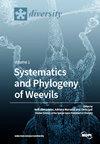红色木材腐烂真菌肝瘘菌在栎林中的担子孢子释放和传播
IF 2.1
3区 生物学
Q2 BIODIVERSITY CONSERVATION
引用次数: 0
摘要
本研究旨在更好地了解腐木真菌肝瘘菌的近距离担子孢子传播,从而为该保护物种的保护管理提供有价值的知识。具体而言,该研究有望揭示北欧条件下橡木林分一个结实季节担子孢子释放和传播的地点特异性模式。在2022年8月至10月期间,在立陶宛中部的三个橡木林(>200年历史)中使用被动孢子诱捕器对真菌孢子进行了诱捕。在整个孢子捕获期间记录了平均日温度。采集的样品采用真菌ITS2 rDNA高通量测序进行分析。结果表明,肝芽孢杆菌reads的相对丰度受子实体成熟时间的影响,而不受日平均温度的影响。虽然不同的研究地点之间存在一定的差异,但结果表明,绝大多数肝芽孢杆菌孢子沉积在离子实体50 m的范围内,这表明该真菌在很大程度上依赖于当地的栖息地进行定植。本文章由计算机程序翻译,如有差异,请以英文原文为准。
The Release and Spread of Basidiospores of Red-Listed Wood-Decay Fungus Fistulina hepatica in Oak Stands
The aim of this study was to obtain a better understanding on short-distance basidiospore dispersal of the wood-decay fungus Fistulina hepatica, thereby providing valuable knowledge for the conservation management of this protected species. Specifically, the study was expected to reveal site-specific patterns of basidiospore release and spread in oak stands during one fruiting season under north European conditions. The trapping of fungal spores was carried out between August and October 2022 using passive spore traps placed in three oak stands (>200-year-old) in central Lithuania. The average daily temperature was recorded throughout the period of spore trapping. Collected samples were analyzed using high-throughput sequencing of fungal ITS2 rDNA. The results showed that the relative abundance of F. hepatica reads was influenced by the time of fruitbody maturation, but not by the average daily temperature. Although there was a certain variation among different study sites, the results showed that a great majority of F. hepatica spores were deposited within 50 m from the fruitbody, showing that the fungus to a large extent is dependent on local habitats for colonization.
求助全文
通过发布文献求助,成功后即可免费获取论文全文。
去求助
来源期刊

Diversity-Basel
Environmental Science-Ecological Modeling
CiteScore
3.40
自引率
12.50%
发文量
925
审稿时长
11 weeks
期刊介绍:
Diversity (ISSN 1424-2818) is an international and interdisciplinary journal of science concerning diversity concept and application, diversity assessment and diversity preservation. It is focused on organismic and molecular diversity. It publishes reviews, regular research papers and short notes in the regular issues. Related news and announcements are also published. Our aim is to encourage scientists to publish their experimental and theoretical results in as much detail as possible. Therefore, there is no restriction on the length of the papers. Full experimental details must be provided so that the results can be reproduced.
 求助内容:
求助内容: 应助结果提醒方式:
应助结果提醒方式:


